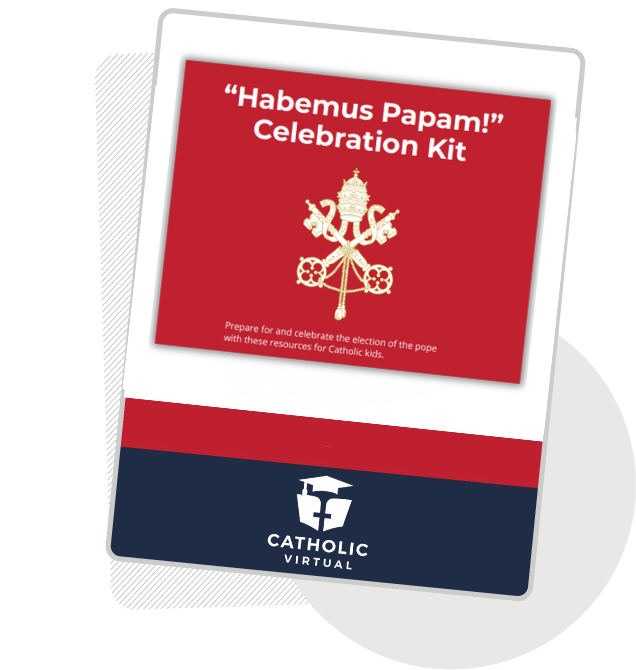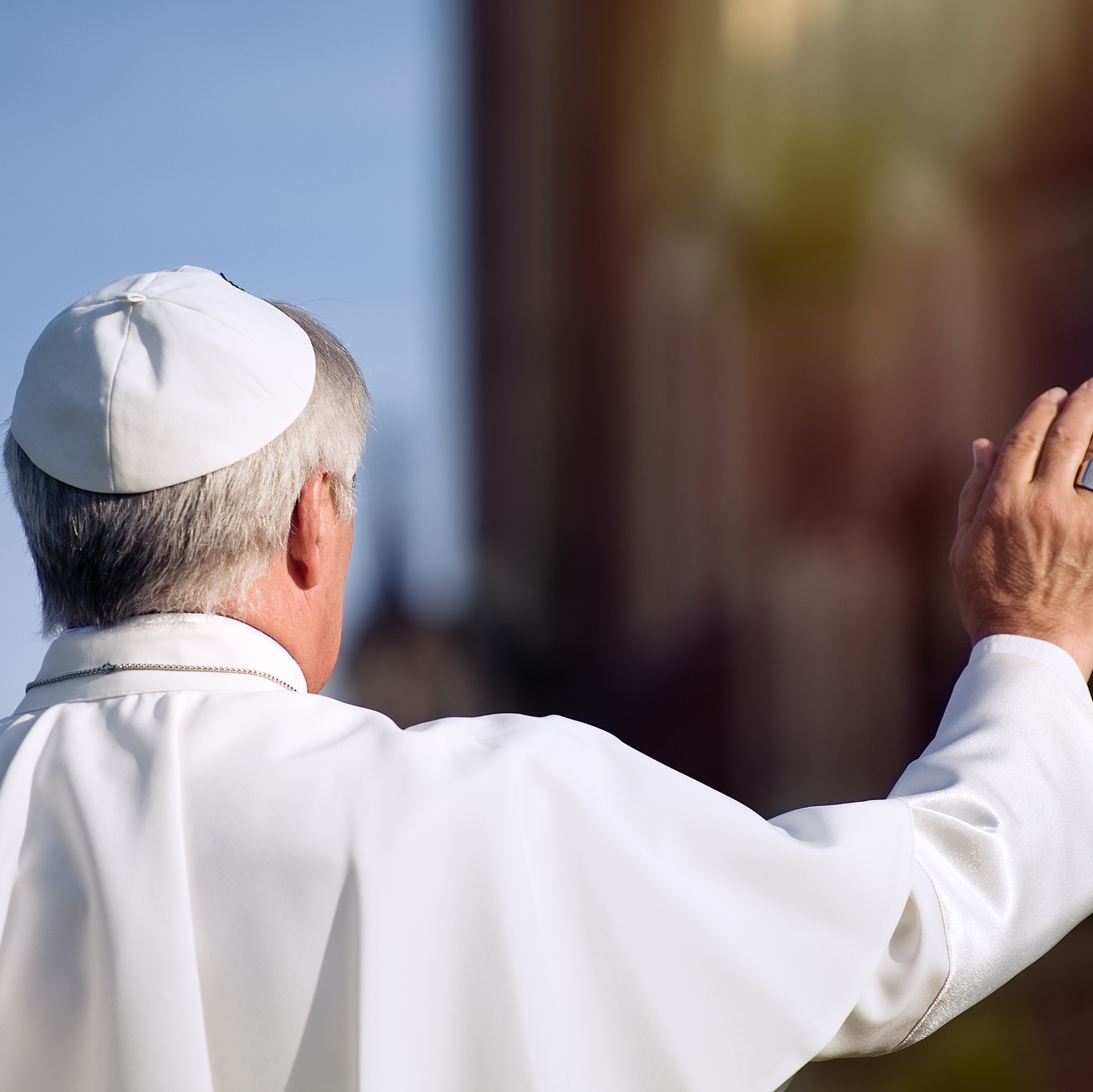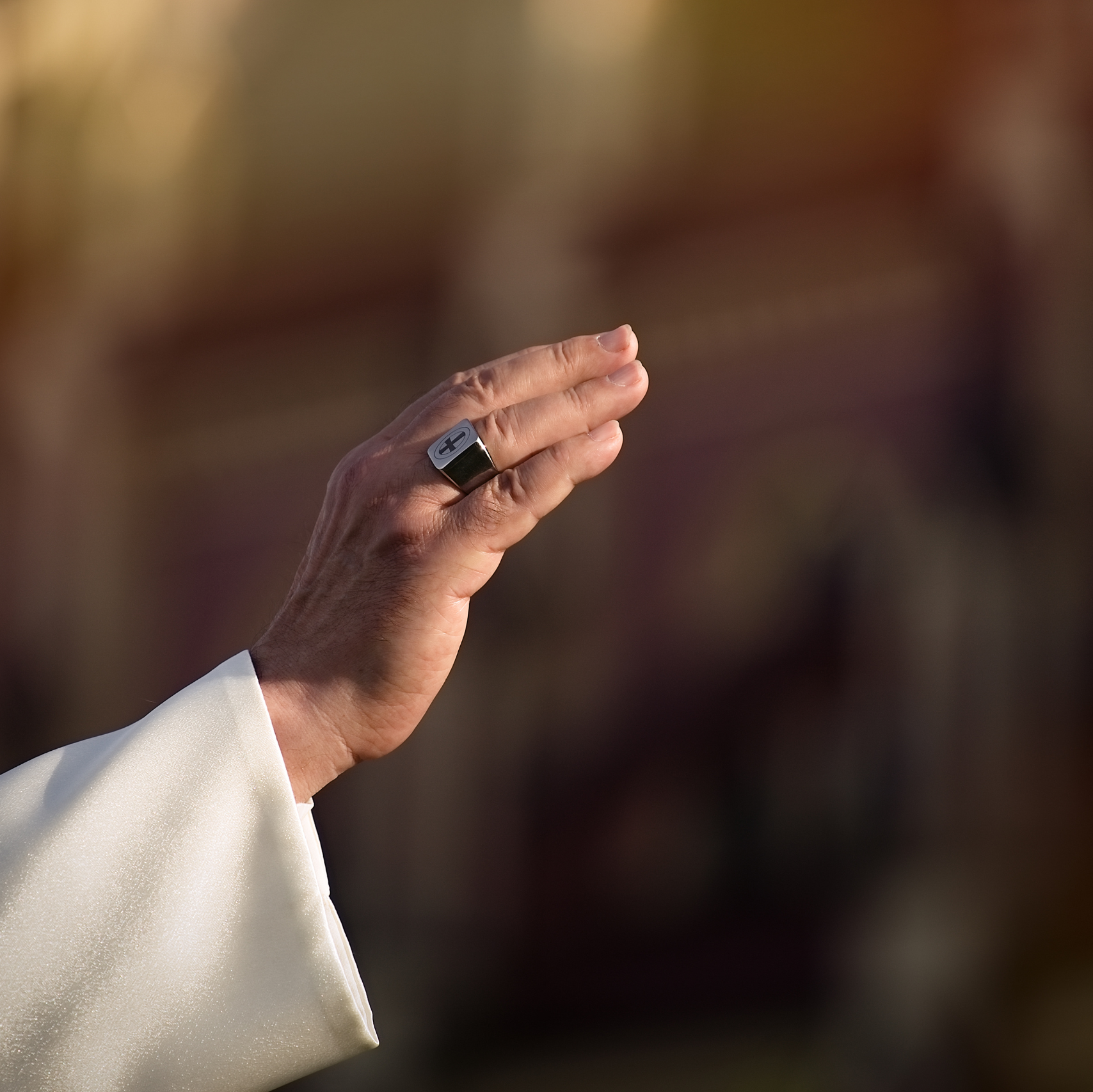Teaching About Conclave in Catholic Schools
April 2025
As Catholic educators, we have an opportunity to teach students both the timeless truths of our faith and the living history of the Church. Moments like the passing of a pope and the election of his successor provide such an opportunity. These events are more than just news—they’re teachable moments to strengthen students’ faith and build Catholic identity in your school community.
This article explores the life and legacy of Pope Francis, the process of electing a new pope through the conclave, and ways we can pray for the Holy Father. It provides an opportunity to teach students not only about Church tradition, but also about God's work in the world today.
“Habemus Papam!” Celebration Kit
Learn, pray, and rejoice in the historic moment of the election of a new pope. Download a kit with meaningful activities for Catholic students and school communities.

Saint Peter, the First Pope
In the Catechism of the Catholic Church, we learn that the role of the pope comes from Jesus Christ’s choice of Saint Peter to lead the Church. Jesus told Peter, "And so I say to you, you are Peter, and upon this rock I will build my church, and the gates of the netherworld shall not prevail against it. I will give you the keys to the Kingdom of heaven. Whatever you bind on earth shall be bound in heaven; and whatever you loose on earth shall be loosed in heaven" (Matthew 16:18-19). Jesus gave Peter the responsibility to guide and protect the faith.
Understanding the Papacy
The papacy refers to the sacred office and ministry through which the pope serves as the spiritual leader of Catholics and the shepherd of the universal Church. Papal authority has been passed down from Saint Peter to each pope throughout history as the pope serves as the Bishop of Rome. As the successor of Saint Peter, the pope is the visible head of the worldwide Church, entrusted with guiding the faithful in matters of faith and morals. The pope keeps the Church united and faithful to Christ's teachings, guided by the Holy Spirit. Each pope, through his unique witness and leadership, leaves a legacy remembered by the Church.
Pope Francis (2013-2025)
Jorge Mario Bergoglio, who became Pope Francis, was born on December 17, 1936, in Buenos Aires, Argentina, to a humble family of Italian immigrants. He initially studied chemistry but felt a deep calling to the priesthood at the age of 21. He joined the Society of Jesus, or the Jesuits, where he began his journey of service. Pope Francis’ early life was shaped by prayer, study, and a deep love for helping others, especially the poor. His commitment to simplicity and service would define his life as a priest, bishop, and pope.
A Humble Shepherd from Argentina
Known for his deep intellect and pastoral heart, Pope Francis served as a teacher, spiritual director, and bishop. He emphasized mercy, humility, and closeness to the people. As Archbishop of Buenos Aires, he rode the bus to work, chose simple meals, and lived modestly. He declined many of the privileges of his office, preferring to walk among the people and be present in their daily struggles.
The Papacy and Legacy of Pope Francis
In 2013, Pope Francis became the first pope from the Americas, the first Jesuit to lead the Church, and the first to take the name Francis, inspired by Saint Francis of Assisi’s love for the poor and for creation. His papacy focused on mercy, care for the environment, and outreach to those on the margins of society. Pope Francis emphasized that faith is about love, mercy, and serving others, not about perfection.
Catholic School Connection: Learn about Saint Francis and pray his famous Canticle of Creation prayer as a class. Then, share Pope Francis’s encyclical Laudato Si’ or a summary with students. Discuss ways God calls us to care for creation and ways your class or school can be stewards.
Electing a Pope: Conclave in the Classroom
While the death of a pope is a time for mourning, it is also an opportunity for Catholics to give thanks for his leadership, pray for the Church, and ask the Holy Spirit to guide the election of the new pope. Understanding the process of conclave allows students to see the importance of prayer, discernment, and the active role of the Holy Spirit in the life of the Church.
What Is Conclave?
When a pope dies, the cardinals gather from around the world to prayerfully discern who the next pope should be. This gathering is called a conclave, meaning "with a key" in Latin, because the cardinals meet in secret, away from outside influence, to listen only to the Holy Spirit.
Catholic School Connection: Invite students to work in groups to research different popes from history and identify key qualities and leadership styles. Encourage debate and a vote on the most important qualities in a pope for today’s Church.
What Happens During the Conclave?
Cardinals under the age of 80 meet in the Sistine Chapel to pray, celebrate Mass, and vote. The process can take several days. If no decision is reached, black smoke rises from the chimney, signaling that a new pope has not yet been elected. White smoke signals that a new pope has been chosen, and bells ring across Rome and the world to announce the good news.
This is an exciting moment for students to watch and discuss as it shows the active presence of the Holy Spirit in the life of the Church.
Catholic School Connection: Consider creating a papal election unit study with activities such as making your own ballot box, learning about the Vatican, or creating a timeline of papal elections. This can help students understand the history and significance of the election process.
Welcoming a Pope with Your School Community
When the white smoke appears and the new pope steps onto the balcony of St. Peter’s Basilica, the world watches in anticipation. The words “Habemus Papam”—“We have a pope!”—mark the beginning of a new chapter in the Church’s history.
The new pope will bring his unique gifts and leadership to the papacy, but one thing will remain the same: he will lead the Church and guide all Catholics in faith. Just as Jesus chose Peter to be the rock of the Church, each new pope stands in Peter’s place.
Catholic School Connection: Discuss with students how the pope’s leadership reflects God’s continuing care for His Church. As the new pope is elected, begin a tradition of praying for him as a school community, perhaps with a special prayer service.
The papal transition offers a wonderful opportunity for Catholic schools to teach students about the rich history and living tradition of the Church. As we pray for the repose of Pope Francis and thank God for his wisdom and service, we also look forward to the future with hope, knowing that the Church is always moving forward, guided by the Holy Spirit.
More Articles




Accreditations and affiliations ensuring a world-class online and blended education




 Student Login
Student Login